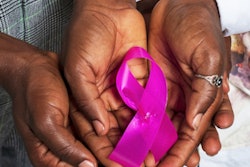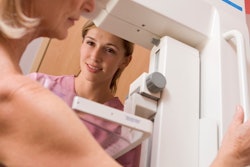
Hispanic women are more likely to have annual breast cancer screening despite having lower overall risk of developing cancer and guidelines suggesting biennial screening, a study published September 20 in the American Journal of Preventive Medicine has found.
Researchers led by Jingwen Zhang from Columbia University wrote that the findings from their study of nearly 13,000 women point to the need for better risk-informed strategies for breast cancer screening and interventions, specifically among multiethnic populations.
"The finding ... further emphasizes the need to implement a more risk-stratified approach to breast cancer screening that balances the benefits and harms of screening at an individual patient level," Zhang and co-authors wrote.
How often women should be screened for breast cancer depends on their risk level, at least according to some organizations. While the U.S. Preventive Services Task Force (USPSTF) recommends biennial screening for women of average risk (a B-level recommendation) starting at age 50, other medical organizations recommend annual screening no matter the risk level, starting at age 40.
Advocates of screening every two years for women of average risk say that this can reduce the rate of false-positive results and overdiagnosis, which can cause financial and psychological burden. The study authors wrote that despite biennial screening recommendations, mammography screening remains largely unchanged, with "most" physicians recommending annual screening for women.
However, women have reported confusion about screening guidelines, as well as a preference to be screened every year. The researchers also pointed out a lack of data on the associations between annual versus biennial screening and overall risk among women. This also goes for women of different racial and ethnic backgrounds.
Zhang et al wanted to find out whether the frequency of mammography screening is consistent with a risk-stratified approach recommended by the USPSTF, in which average-risk women between the ages of 50 and 74 years are screened every two years.
The team looked at data from 12,929 women who presented for screening mammography from 2014 to 2018 at Columbia University Irving Medical Center. Out of the total, 37.3% of the women identified as Hispanic or Latina, 24.6% non-Hispanic white, 8.6% non-Hispanic Black, and the rest a mix of Asian and other backgrounds.
The women were placed into either annual screening (82.7%) or biennial screening (17.3%) groups. The researchers used clinical data from the electronic health record (EHR) to calculate individual breast cancer risk according to a model by the Breast Cancer Surveillance Consortium.
| Breast cancer screening frequency and characteristics among Hispanic, non-Hispanic white women | ||
| Non-Hispanic white (n = 3,180) | Hispanic (n = 4,825) | |
| Annual screening | 79.8% | 85% |
| Biennial screening | 20.2% | 15% |
| Low breast density | 44.2% | 71.9% |
| High breast density | 55.8% | 28.1% |
| Average five-year invasive breast cancer risk | 1.95 | 1.21 |
Zhang and colleagues also found differences between the two groups when it came to having a first-degree family history of breast cancer. At 3.3%, the Hispanic cohort was significantly lower in this category than the non-Hispanic white women at 6.5% (p < 0.001).
The study authors called for screening interventions in women of racial and ethnic minority backgrounds to balance efforts in engaging average-risk women by discussing the benefits and potential harms of annual screening. They added that these harms "might" occur at higher rates among breast screening facilities serving vulnerable populations and could result in lower adherence to future screening.
The team also suggested that using data from the electronic health record (EHR) in a semiautomated fashion can help save time in calculating individual breast cancer risk in women.
"Although risk calculation using the EHR alone might have inaccuracies or missing data for risk factors such as race/ethnicity and family history of breast cancer, it could serve as a tool for initial risk stratification and prompt more comprehensive breast cancer risk assessment," they wrote.




















